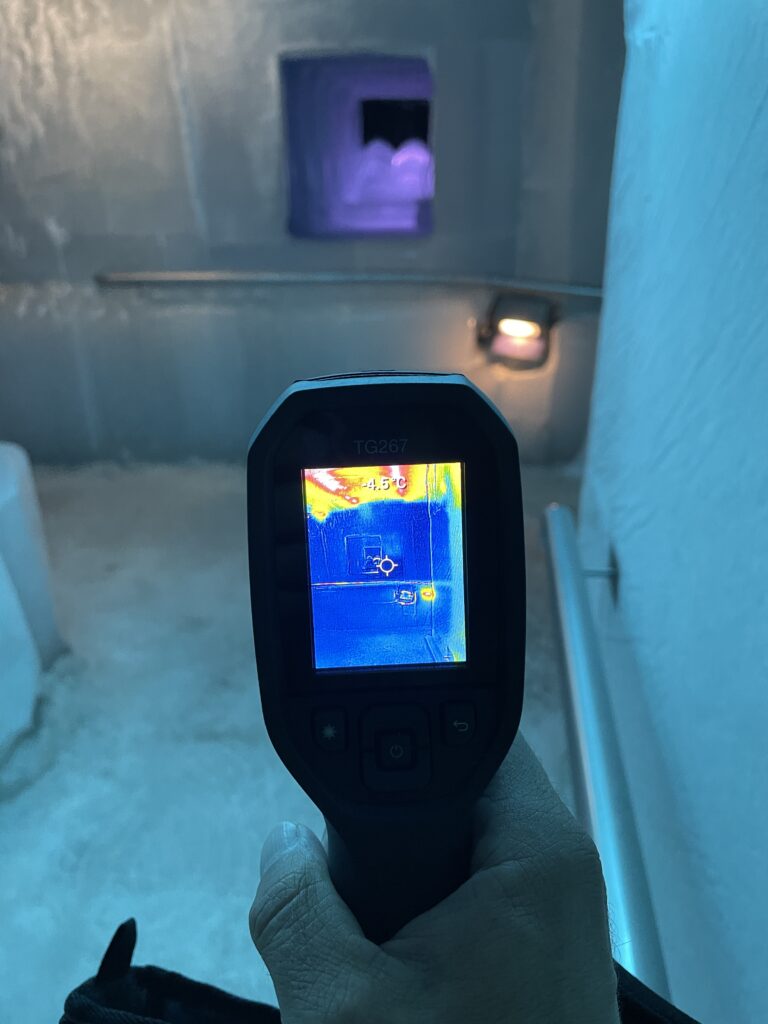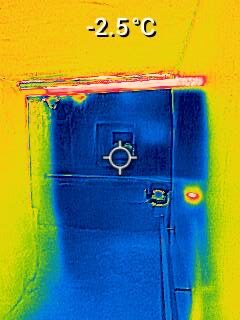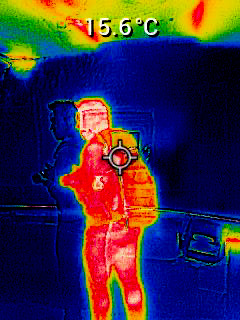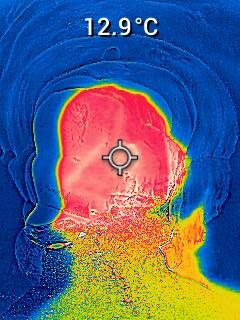

Why is the entrance and exit area of the Ice Palace cooled? The glacier and the ice should actually be cold enough.
A man is a radiator! If we walk slowly, we are comparable to a radiator with 150-200 watts.

A thermal imaging camera can be used to visualize the different temperatures of ice and humans.


So we give off a lot of waste heat! And this heat does something to the ice palace: it makes the ice melt. Energy is required to melt ice. It takes just as much energy to melt 1 kilogram of ice to heat 1 kilogram of water to 80°C.
During the slow walk through the ice palace and a stay of 30 minutes on average, you melt 800 grams to 1 kilogram of ice. So your visit could destroy an ice cube with an edge length of 8 cm.

It is therefore important to cool yourself down at least a little and to ensure that as little heat energy as possible is carried into the ice palace at the entrance and exit. With a 30-minute visit to the ice palace, you produce almost 900 ml of melt water.

The Dachstein Glacier as a whole loses an average of 3,000,000,000 liters (3 billion liters) of water annually. This corresponds to 20,000,000 baths (20 million baths with 150 liters of water in each bath) or 750 swimming pools (with 4 million liters of water per pool). If there is not enough snow in winter, the glacier shrinks.
